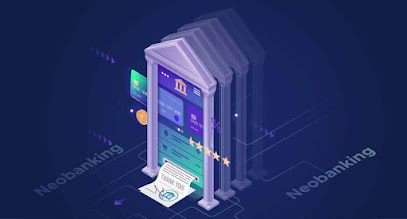Banking Basics: What Are Banks and How Do They Work?
‘‘Banking’’ in simple terms can be defined as ‘‘the business of banking,’’ a vibrant business that continually evolves to meet the latest financial needs and economic conditions.
What is a Bank?
A bank is a financial institution and a financial intermediary that accepts deposits and channels those deposits into lending activities, either directly or through capital markets. A bank connects customers that have capital deficits to customers with capital surpluses.
While banks play a critical role in financial intermediation and in the creation of money, banking’s primary focus is the satisfaction of customers’ financial needs.
Banking services satisfy financial needs such as:
- Earning a return on idle funds
- Borrowing money to achieve goals
- Preventing losses
- Managing money conveniently and efficiently
Now that we’re clear on banking and it’s main functions, let’s look at some of the basic banking concepts and terminologies.
Automated Teller Machine (ATM)
ATM is an electronic banking outlet that allows customers to complete basic transactions without the aid of a branch representative or teller. Anyone with a credit card or debit card can access most ATM machines, the amount is usually limited by day and transaction.
Bank Account
A bank account allows the account holder to deposit, safeguard his money, earn interest, and make cheque payments.
Bank Rate
It is the rate of interest charged by a central bank to commercial banks on the advances and the loans it extends.
Cheque
Written order to a bank to pay a stated amount from the drawer’s account. Cheque numbers are unique per bank. Cheques are considered good as cash.
Bouncing of a Cheque
When an account has insufficient funds, the cheque is not payable and is returned by the bank with a reason “Exceeds arrangement’ or “Insufficient funds”
Clearing
Clearing of a cheque is done by the Clearing House. Further, in this process, the amount of the cheque is debited from the issuer’s account and credit to the beneficiary’s account.
Current Account
It is an account that can be opened generally for business purposes.
Debit Card
It is a card issued by the bank so that customers can withdraw their money from their account electronically.
Demat Account
A Demat account (short for Dematerialized account) is an account to hold financial securities (equity or debt) in electronic form.
Guarantor
A guarantor creates a trust which takes the responsibility of repayment of a loan. Usually, a guarantor is not liable for the repayment of the loan. However, in some cases, the liability and responsibility of repaying the loan lie with the guarantor.
Internet Banking
Most banks allow account holders to access their accounts using the internet. You can also perform certain transactions using this system. This is internet banking or online banking or e-banking.
Liquidity
It is the ability of converting an investment quickly into cash with no loss in value.
Overdraft
It is the amount of cheque above the balance in the account of the issuer. Further, some banks allow certain account holders to overdraft up to a certain limit.
Teller
He/ She is a staff member of the bank who cashes cheques, accepts deposits and carries out different banking services for the customers.
We hope you now have a better understanding of the basic terms used in Banking. Using the appropriate terminology can make or break a financial deal. Hence, it is critical to understand the various terms used in banking to take full advantage of the provided services, especially when shopping for a bank and needing to compare before making financial decisions.
Source - https://wizely.in/wizeup/banking-definition-function-terms


Comments
Post a Comment